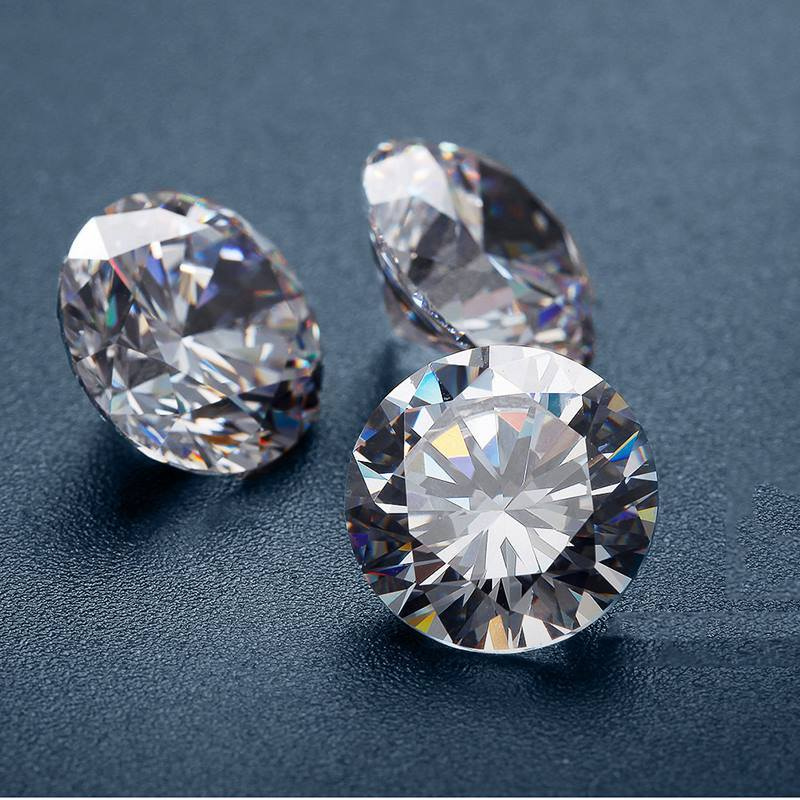Natural Diamond VS a Lab-created Diamond

If you’re just into the visibility of the diamond, then it doesn’t matter if you go for a natural or human-made diamond. Now that that’s out of the way let us dig deeper into the major differences that you will probably notice in a natural vs a lab-created diamond. Natural diamonds are made over 2-3 billion years from carbon compounds under extreme pressure or extreme temperatures. Typically, a lab-created diamond is most likely created in one of two ways.
HPHT or High pressure and high-temperature method that imitates the natural creation of diamond. To speed up the process much more pressure and a much higher temperature are applied to the carbon compounds. Then there is the Chemical Vapor Deposition method. This is a process where high temperature and ionization of hydrogen and carbon are used until a plasma forms and once the molecular bond is broken down diamond begins to form. This last step is normally where additional treatments are used if there need to be any additional changes that need to be made for the diamond. However, the gradual pressurization and the lab imitations are still very different process and naturally, some changes in pure and lab-created diamonds may be observed:
Durability:
Many believe that lab diamonds are more durable than the natural, mined diamonds that are recovered through a labor-intensive process that might even damage the rock during the mining process. However, there have been concerns that lab-made diamonds, while they are durable, they are not the most eco-friendly to produce. These diamonds are created through a labor-intensive process that uses a significant amount of carbon and naturally releases the excesses into the environment. This carbon gets oxidized in the air to form the greenhouse gas Carbon dioxide. So yeah, if you are looking for a diamond that is durable and doesn’t really care much for the environmental effects that the production method has then a lab-created diamond is probably the one for you.
Look:
For the most part, as we mentioned before, a lab-created diamond and a natural diamond will look the same. If you buy jewelry with a lab-created diamond no one will really be able to tell the difference between the two unless of course, you tell them yourself. However, if you look close enough, you may be able to see microscopic inclusions on lab-created diamonds. Without magnification tools, you will most likely not be able to witness these inclusions. With that said, if you’re simply looking for a less costly alternative for a diamond that delivers all the same qualities then a lab diamond is not that bad of an option.
Resale Value:
It might come as a surprise to you but the difference in resale value between natural and synthetic diamond is greater than even the price differences between the two. The natural diamonds will be 50% the cost that you bought but synthetic ones are drastically less valuable. You should know that you’re purchasing a loss the second you checkout with a synthetic diamond in your cart. A natural diamond will rise in value over time whereas a synthetic one only drops in its value. So for both a synthetic and natural diamond of the same grade, the price difference will be great.
Price:
Since we’re talking about the difference in resale, let’s get to the most important part. The difference in the price range between a natural and synthetic diamond. Ever since the initial lab diamonds were engineered there have been dramatic fluctuations in price between lab diamonds and natural diamonds. 5-6 years ago, lab diamonds were 25-30% more expensive than natural diamonds however, today the same diamonds are 45-50% cheaper than natural diamonds. This difference is due to the supply of diamonds. Natural diamonds have a greater demand a very low supply. Natural diamonds take years to be pressurized and formed by the earth’s surface whereas synthetic diamonds take a lot less. This makes natural diamonds a lot more expensive and pretty rare. The prices of lab diamonds seem to be falling at a dramatic rate. Remember that if you are buying a lab diamond then it will probably sell for a fraction of that price. So as far as price is concerned, a natural diamond offers more stability in price and resale value even if it is a little heavy on the pocket. Natural colored diamonds are very rare in compare to colorless diamonds, so colorless diamond price is cheaper than natural colored diamonds.
Can a Jeweler tell if a diamond is Lab-created?
You might think that a professional will be more experienced In telling the difference between a natural and lab-created diamond. However, for even a gemologist it is not easy to spot the small inclusions on lab-created diamonds unless of course magnifying equipment is used. In some lab-created diamonds, these inclusions will be more visible while in others it will be much more complicated to spot them.
Can Lab diamonds pass a diamond tester?
While there are differences between a lab and a natural diamond, however, the basic structure is more or less the same. Thus, they will pass any sort of test to prove that they are indeed diamonds. They are made from crystallized carbons just like real diamonds.
Are lab diamonds as strong as natural diamonds:
Yes, a lab diamond is structurally the same as natural diamonds in that they are both crystallized carbons. This is why they will both have the same amount of durability, shine, etc. among other features. Lab diamonds can also be made to have a different color.
Conclusion:
Lab diamonds are the same as the mined diamonds in the shine, brilliance, sparkle, and durability so if you are simply looking for a diamond that will be cheaper in price then a lab diamond is the one you should consider. However, if you think that you might sell the diamond in the near future and you want something that will give you the same resale value if not a profit then you should probably look for a good quality diamond.




